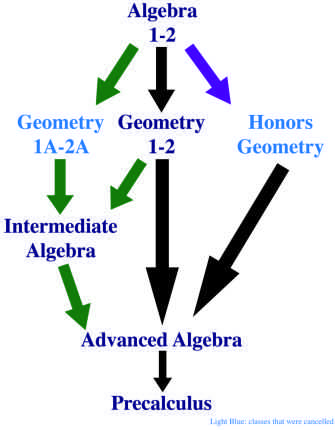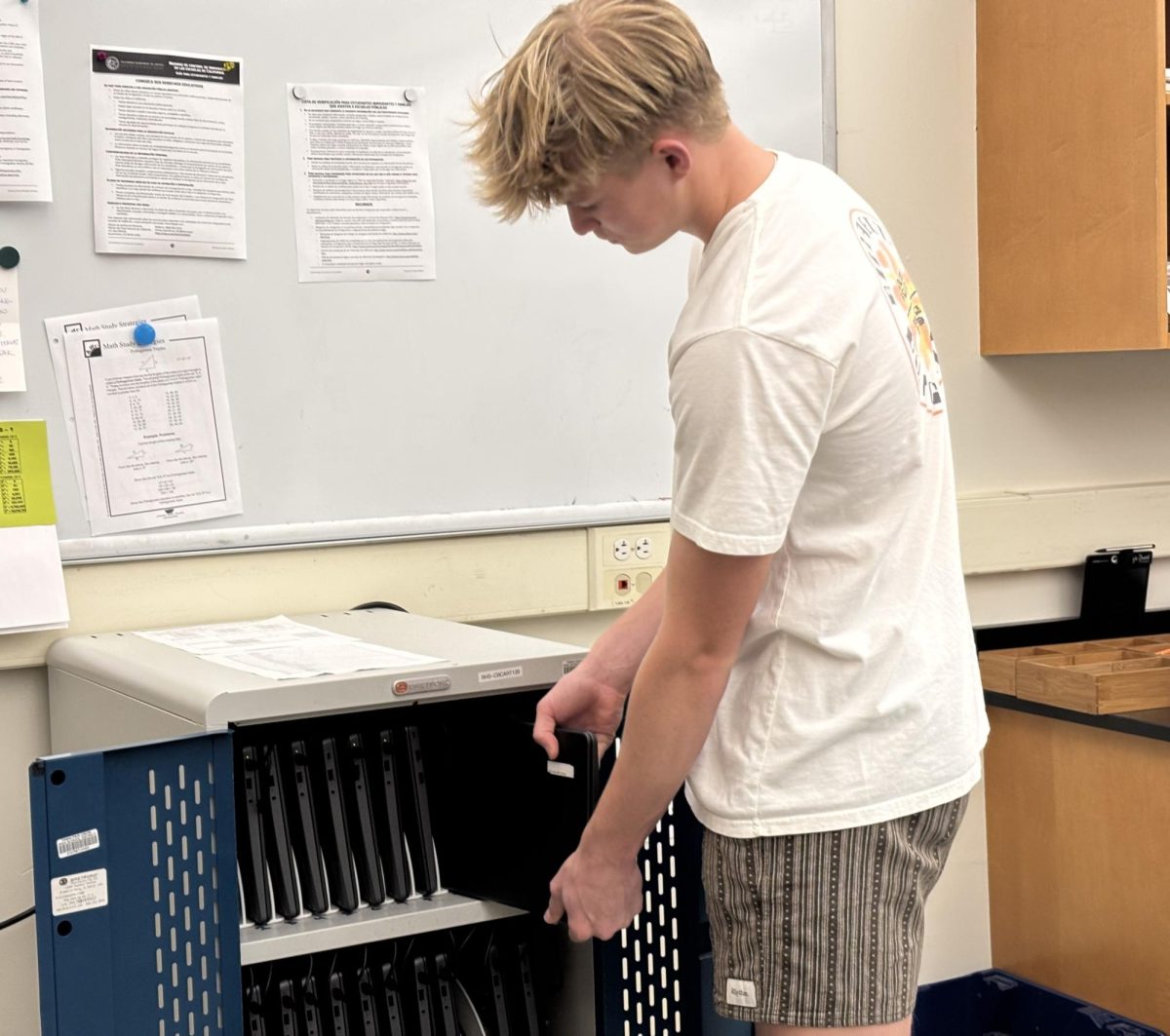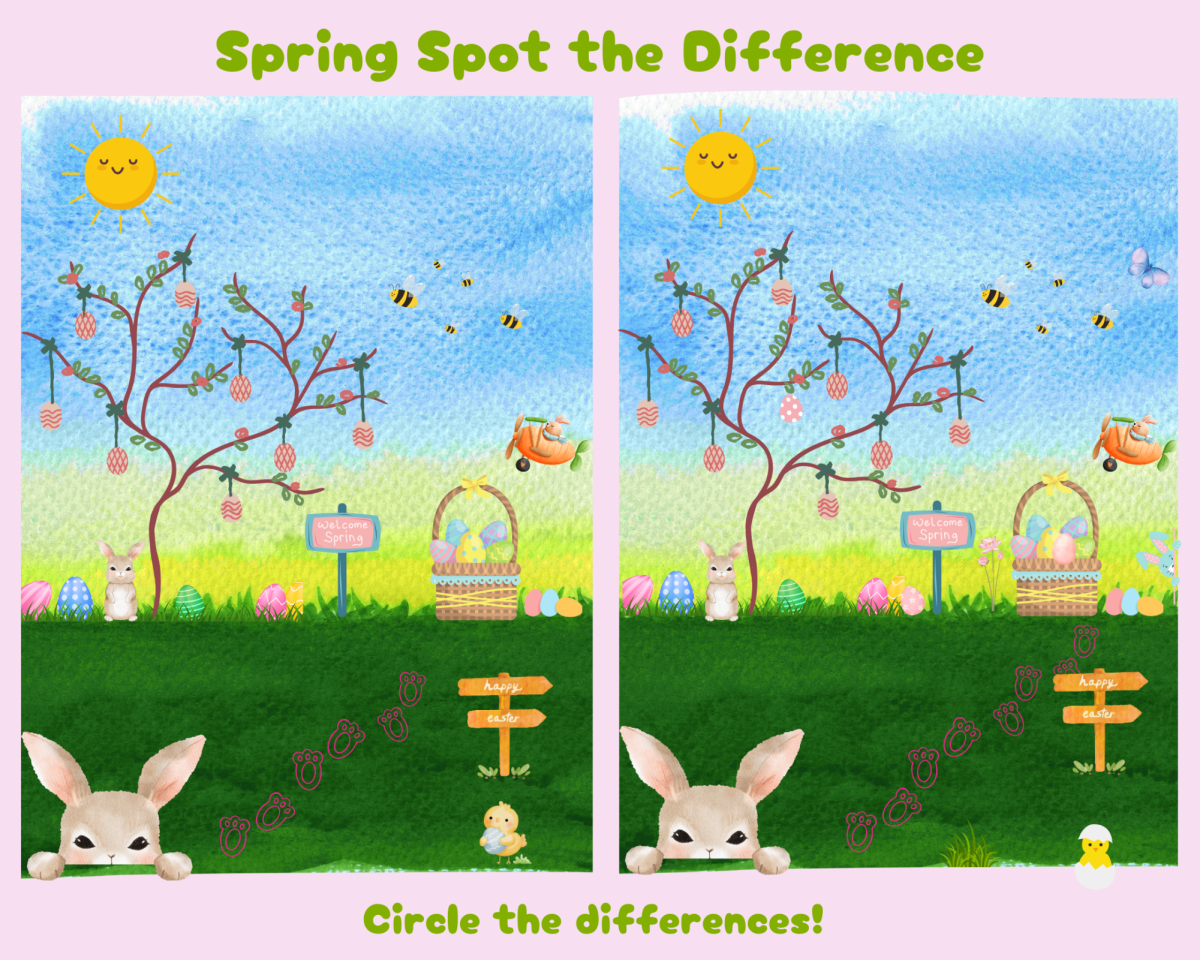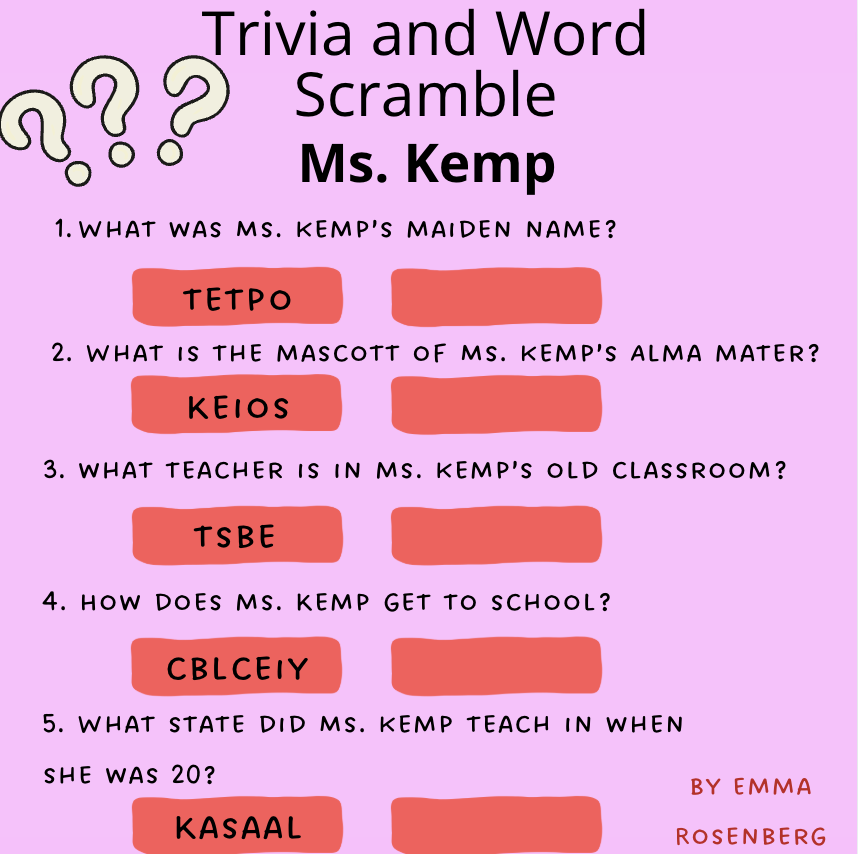Geometry A and Honors Geometry will be offered next school year after controversy about math cancellations erupted last year.
Last December, the administration decided that Geometry A, a slower alternative to Geometry 1-2, would be merged with the Geometry 1-2 class. Since Honors Geometry had been canceled two years before, the merge resulted in three levels of students within only one class.
Additionally, Algebra P3-P4 was combined with Algebra 1-2, which was less controversial, as the two classes were already fairly similar.
Math teachers were upset about the cancellation of Geometry A, according to Aaron Simon, the math teacher leader, as it placed significant pressure on teachers who had to both catch up struggling students and challenge advanced students in one class.
“It has provided a lot of stress to the math teachers who are teaching Geometry because originally they had only Geometry kids. Then they got regular Geometry and Honors Geometry kids grouped together, and then finally they got all three levels combined into one class, which made the pacing and the planning a lot more difficult for them,” Simon said.
Math teacher Allison Kristal said that it is harder to reach all students when there is such a wide variety of levels in one class.
“It’s very difficult to try and differentiate my curriculum. You want to engage your students that are really passionate about mathematics and really excited about it,” Kristal said. “The students who I feel would be thriving at a slower pace, I know that they are wrestling with trying to master all of the small details instead of focusing on the bigger picture.”
Geometry Advanced Workshop was offered as extra support for some students in Geometry 1-2, essentially enrolling them in two math classes. However, according to Kristal, this doesn’t always work for students. [soundcloud url=”https://api.soundcloud.com/tracks/249867851″ params=”auto_play=false&hide_related=false&show_comments=true&show_user=true&show_reposts=false&visual=true” width=”100%” height=”100″ iframe=”true” /]
Kristal said she feels frustrated by the struggle of some students in the class.
“I’m really doing everything I can and I’m putting forward so much time and energy that could be put towards other disciplines as well,” Kristal said.
Geometry A covers most of the same topics as Geometry 1-2, according to Kristal. The main difference between the two is that Geometry A is less comprehensive.
“Students come to you with certain skill sets. They don’t all have the same prerequisite skills in place,” Kristal said. “For [Geometry A], I would really emphasise more of the broader topics in geometry. I would have more time to fill in an algebra foundation and feel like I’m getting them to a really strong level of mastery.”
The math department decided to discontinue Honors Geometry a few years ago in hopes of benefitting both upper and lower level students, according to Simon.
“A lot of math teachers had the thought that by putting students of mixed abilities in a single class it could be helpful for both,” Simon said. “The higher level kids might be able to learn by teaching a little bit and the lower kids would benefit by having more teachers.”
The decision to remove Geometry A, however, was not supported by the math department, which voted 13-2 against its cancellation.
This decision was made by Principal David Sondheim, who hoped that giving extra support to students who would have been placed in Geometry A could allow them to advance to a higher math class.
“If you took Geometry A, you didn’t have a choice to go directly into Advanced Algebra, you could only go Geometry A into Intermediate Algebra, which now meant you were forced into a year of a course that was not UC/CSU eligible,” Sondheim said.
Kristal expressed frustration with the decision to remove these classes, saying that it failed to represent the sentiments of the math teachers themselves, who had to figure out how to best support students of varying levels.
“I think from the beginning, we didn’t really understand as math teachers what problem we were trying to solve. We were just told that this was going to happen,” Kristal said. “We don’t believe philosophically that students should have to take two math classes like the support class to get through a class.”
According to Sondheim, he talked to the department math teacher leader and other math teachers before cancelling Geometry A.
“In my meetings with [math teachers], they expressed concern about the decision I was making, so I absolutely took their input very seriously and into consideration,” Sondheim said. “At that time, I still felt like it was the right decision, but it certainly helped me thoroughly think about what the right thing was to do.”
The main reasoning behind the cancellation of Geometry A was to increase students’ chances of admission to UCs and CSUs, which require students to complete Advanced Algebra by the time they graduate. Students in Geometry A couldn’t move on to Advanced Algebra, but had to take the next level of Geometry instead, setting them behind.

However, at the end of last year, Redwood received approval for Intermediate Algebra to count as a year of math for UC/CSU.
In the fall of 2015, Tara Taupier, assistant superintendent of educational services, created a math task force to solve the issues within the math departments of all schools in the district.
The task force is composed of the four teacher leaders in the district as well as one math teacher from each comprehensive site, selected by the teachers’ union, and one special education teacher.
They finalized a proposal on how to fix the problems within the math department in December, which they presented to the board on Jan. 12.
“They came up with a proposal that had, what we called, pathways, to A-G eligibility in math,” Taupier said. “It had entering 9th, 10th, 11th, and 12th. It had the different math course offerings students could take in each of those years, all of them resulting, if you are successful each year, all of them would result in being eligible for UCs in math.”
The point of bringing the proposal to the board was to receive their support and, if not, to answer questions and explain their thinking. According to Taupier, each of the schools would then offer their math programming at the respective locations.










